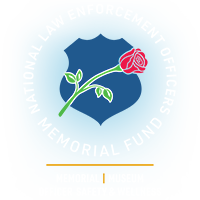This post was written by a friend of the Museum, Officer Eric Stolzman, (Retired #490), Yale Department of Police Services. Officer Stolzman served in New Haven, Conn. and donated his collection to the Museum in 2006.
Collecting has always been a passion of mine, instilled in me by my father when I was only nine or 10 years old. After he passed when I was 15, I felt the full influence of my father having belonged to the “Greatest Generation,” a generation defined by beliefs in honor, duty, and patriotism. Stories about my father and other contemporary family members abounded. I had one uncle in particular who served in the submarine service during World War II. Later, he worked for the CIA and shared his stories about traveling through Europe during the Cold War. I also vividly recall the individuals from national and international police agencies that were often at his home. My uncle was a collector of police memorabilia, and I would eventually strive to follow in his professional and collecting endeavors.
Photograph, Benson and his two daughters, Collection of the NLEM 2006.488.139
One of the most important groups of items I have ever collected reflects my desire to honor the memory of past officers, as well as explore the social mores of the past and how the lives and experiences of officers from several generations ago are still relevant to today’s officer. I discovered an officer named William Benson who started his career in 1888 with the Brooklyn Police Department in New York, which eventually merged with other boroughs to become the New York Police Department (NYPD).
Through contact with his family, I was able to obtain his Brooklyn uniformed photograph, appointment certificate, valor medals from two separate occasions, numerous NYPD police items , and a number of personal items, including his death certificate and a letter written about him by one of his daughters. With further investigation, I learned things about this man that even his relatives knew nothing about. You can imagine my pride as I shared this additional information with his family generations later. Benson retired in 1912 and died in 1935, but the memory of his service lives on because of the Museum’s vision to create a venue for displaying the history of men like him.
When I learned about plans to erect a museum representing the history of law enforcement, I contacted the National Law Enforcement Museum. Being informed that some 300,000 to 400,000 visitors per year are expected to visit the museum, I am honored by the inclusion of my collection and its contribution to our profession. The lives of officers, like Officer William Benson, can live on and teach others what I believe are the principles of our nation’s finest.


